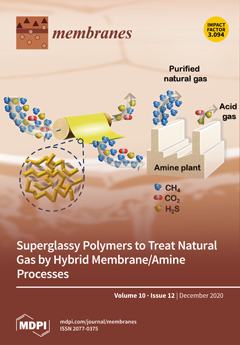Owing to their extraordinary thermal, mechanical, optical, and electrical properties, boron nitride nanotubes (BNNTs) have been attracting considerable attention in various scientific fields, making it more promising as a nanomaterial compared to other nanotubes. Recent studies reported that BNNTs exhibit better properties than
[...] Read more.
Owing to their extraordinary thermal, mechanical, optical, and electrical properties, boron nitride nanotubes (BNNTs) have been attracting considerable attention in various scientific fields, making it more promising as a nanomaterial compared to other nanotubes. Recent studies reported that BNNTs exhibit better properties than carbon nanotubes, which have been extensively investigated for most environment-energy applications. Irrespective of its chirality, BNNT is a constant wide-bandgap insulator, exhibiting thermal oxidation resistance, piezoelectric properties, high hydrogen adsorption, ultraviolet luminescence, cytocompatibility, and stability. These unique properties of BNNT render it an exceptional material for separation applications, e.g., membranes. Recent studies reported that water filtration, gas separation, sensing, and battery separator membranes can considerably benefit from these properties. That is, flux, rejection, anti-fouling, sensing, structural, thermal, electrical, and optical properties of membranes can be enhanced by the contribution of BNNTs. Thus far, a majority of studies have focused on molecular simulation. Hence, the requirement of an extensive review has emerged. In this perspective article, advanced properties of BNNTs are analyzed, followed by a discussion on the advantages of these properties for membrane science with an overview of the current literature. We hope to provide insights into BNNT materials and accelerate research for environment-energy applications.
Full article






